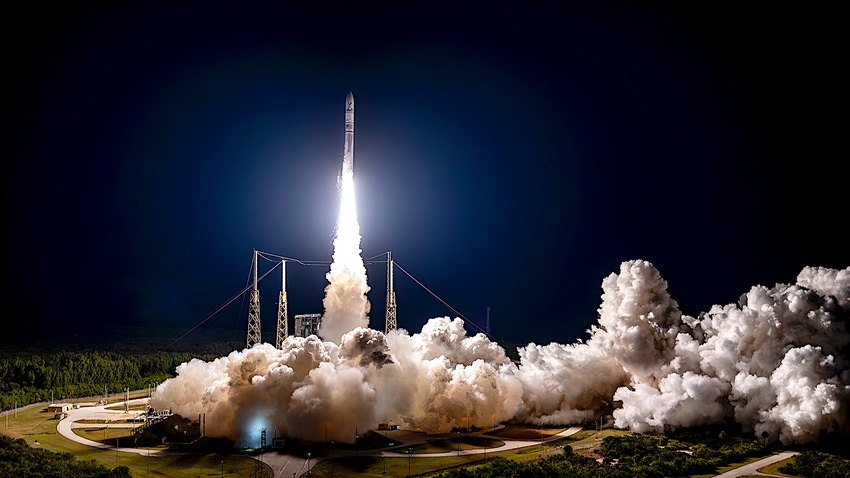ULA’s Vulcan Booster Debuts Blue Origin’s BE-4 Rocket Engines
A successful first launch for the United Launch Alliance Vulcan booster, which employs Blue Origin’s BE-4 main engines.

United Launch Alliance ignited its first Vulcan booster to orbit, carrying Astrobiotic’s Peregrin lunar lander (which, unfortunately, suffered technical problems of its own enroute to the moon) as well as the Enterprise Flight mission for Celestis Memorial Spaceflights.
The successful launch is notable because it is the first flight for both the Vulcan rocket and for its BE-4 engines. The booster also employs a pair of Northrop Grumman’s venerable solid rocket boosters and it carried a Centaur V upper stage employing Aerojet Rocketdyne’s RL10 engines. The launch system also includes L‑3 Avionics Systems avionics and RUAG’s payload fairings and composite structures.
Vulcan Centaur has a maximum liftoff thrust of 3.8 million pounds and can carry 56,000 pounds to low Earth orbit, 33,000 pounds to a geo-transfer orbit, and 16,000 pounds to geostationary orbit.
Each of the liquified natural gas (LNG)-fueled BE-4 engines contributes 550,000 lbs. of thrust at sea level. Blue Origin says that the benefits of LNG fuel include its efficiency, low cost, and wide availability. Kerosene-fueled rockets need scarce helium to pressurize the fuel tanks, but LNG provides inherent autogenous repressurization, so no pressurizing gas is needed.
Additionally, LNG fuel contributes to the BE-4’s deep throttle capability, because the gas has clean combustion characteristics even at low throttle levels, which simplifies subsequent reuse of the engines.
While the Vulcan is not designed for a propulsive recovery, parachute-based reuse is planned, as the engines are designed for multiple flights. “Vulcan’s inaugural launch ushers in a new, innovative capability to meet the ever-growing requirements of space launch,” said Tory Bruno, ULA’s president and CEO. “Vulcan will provide high performance and affordability while continuing to deliver our superior reliability and orbital precision for all our customers across the national security, civil and commercial markets.”
While there was nothing especially tricky about this inaugural Vulcan launch, the Centaur V is suitable for national security missions with specific requirements, according to ULA, which cites the upper stage’s ability to execute “the most complex orbital insertions within the most challenging and clandestine orbits.”
The flight served as the first (Cert-1) of two certification flights required for the U.S. Space Force’s certification process. The second certification mission (Cert-2) is planned within a few months, with the first Vulcan mission to support national security space expected this summer following successful completion of the two certification flights. Customers have placed orders for more than 70 Vulcan launches, including, including 38 missions for Amazon’s Project Kuiper.
About the Author(s)
You May Also Like





